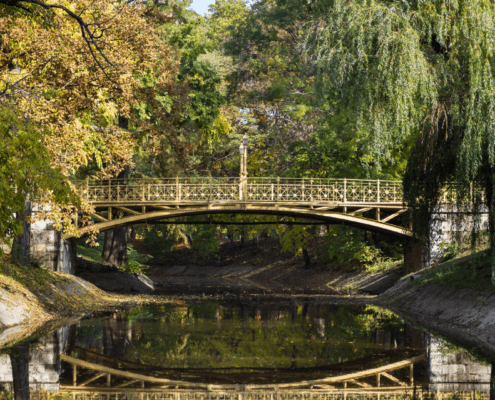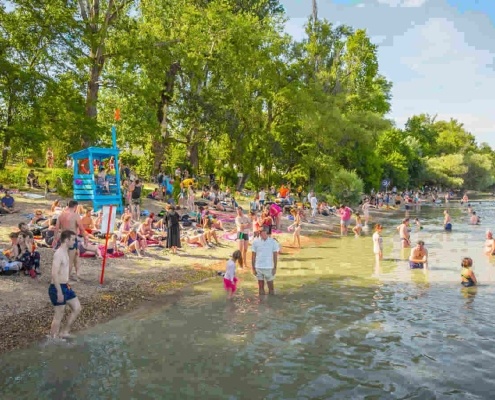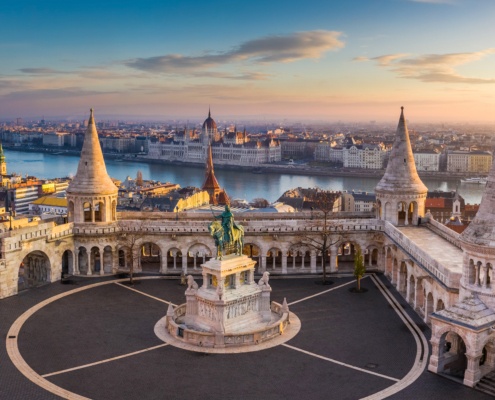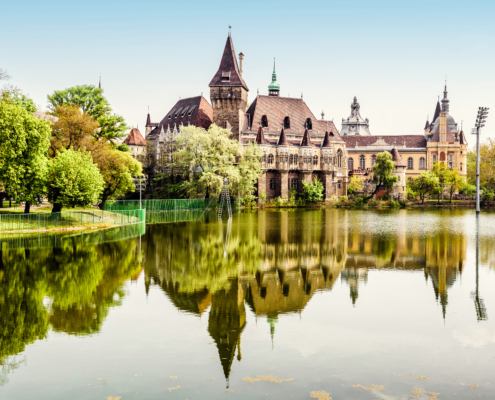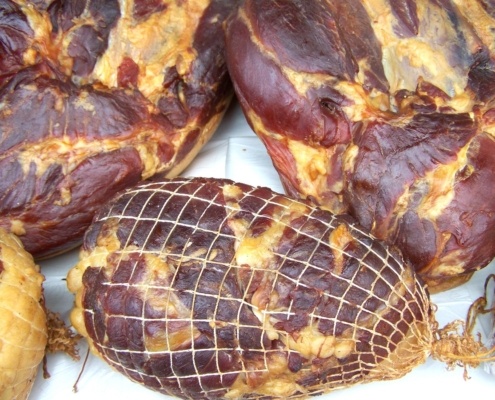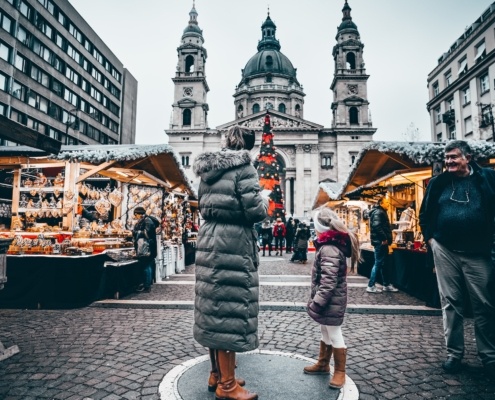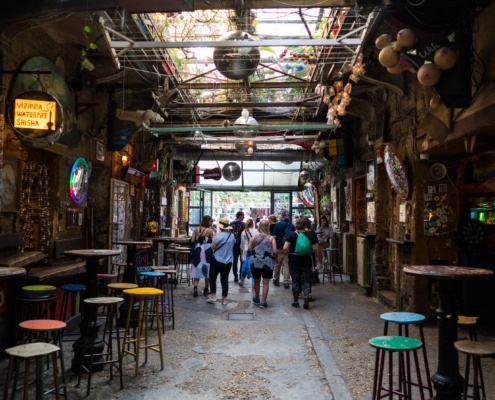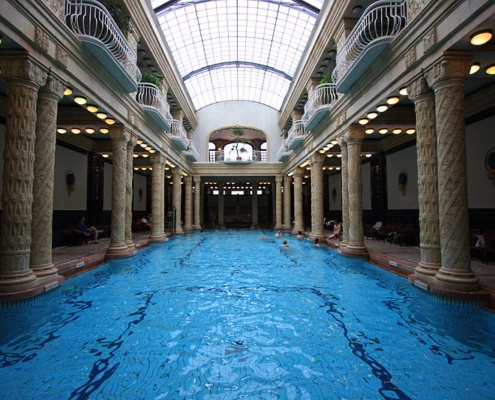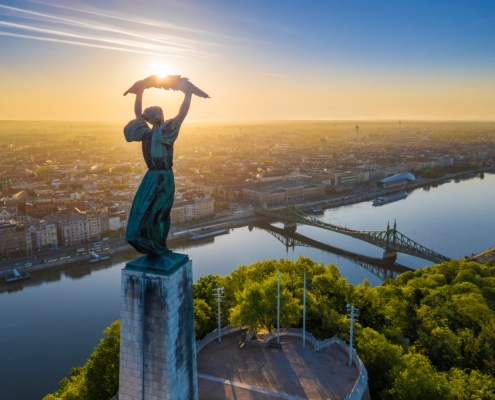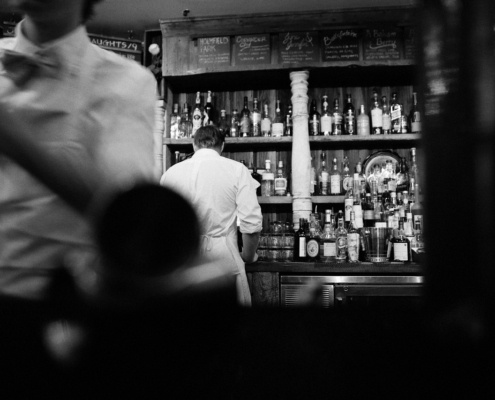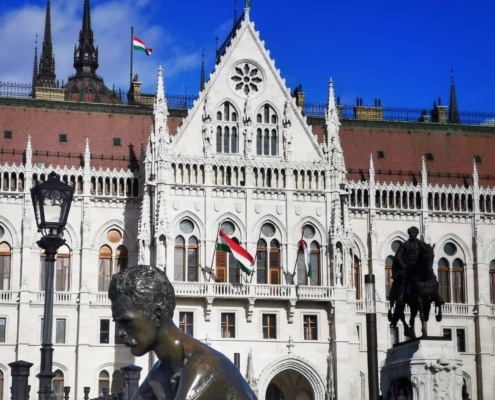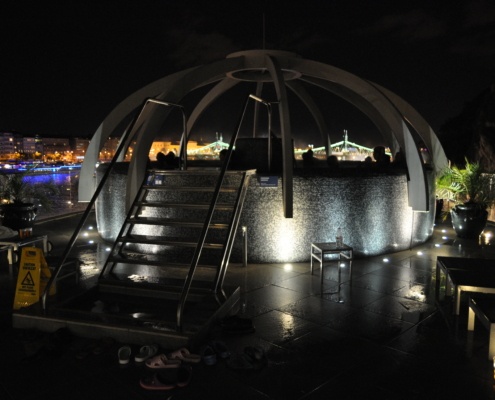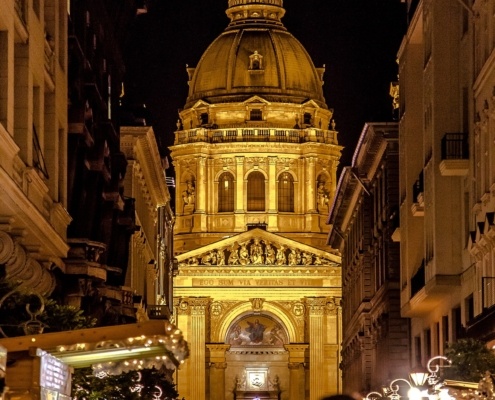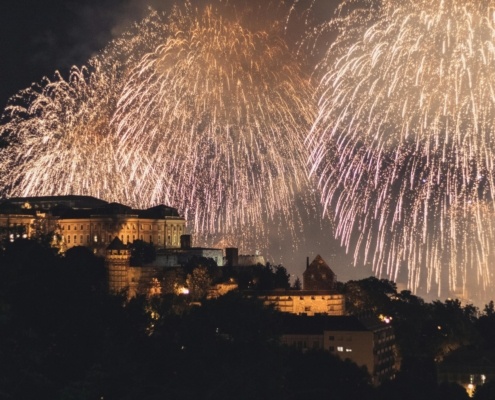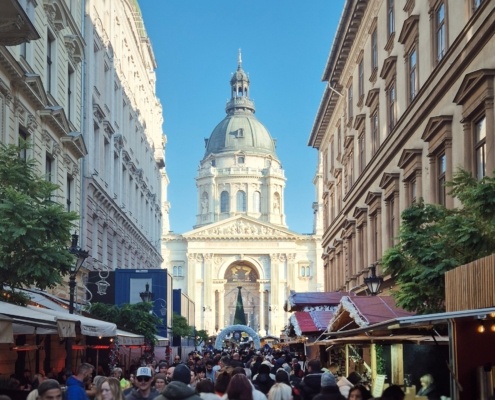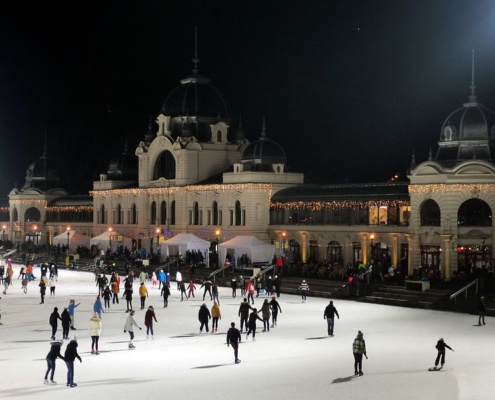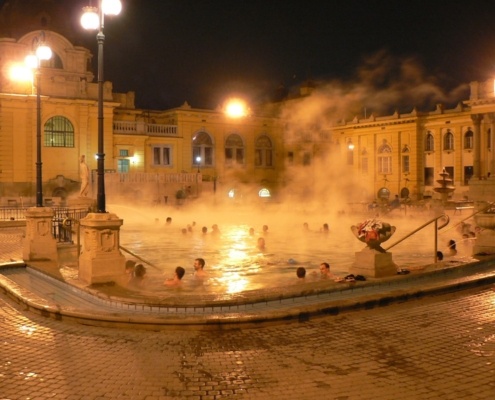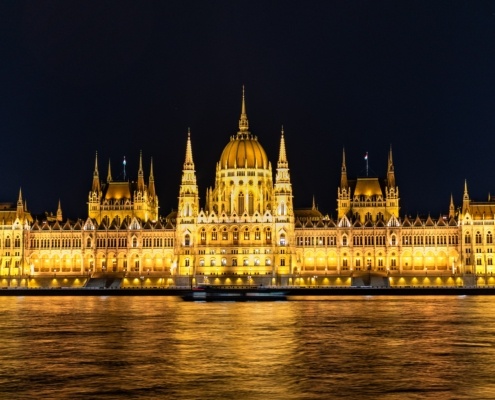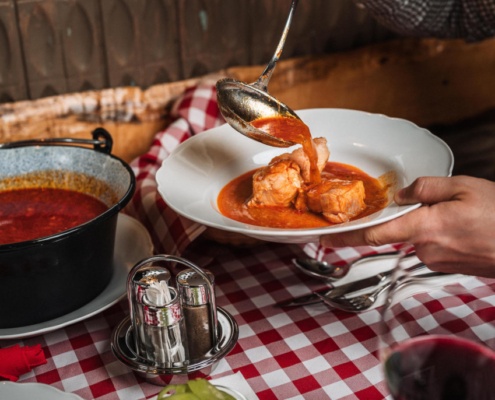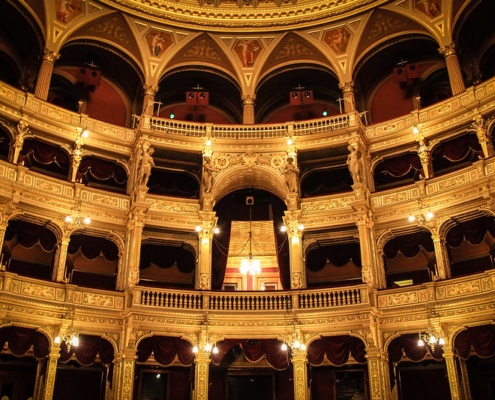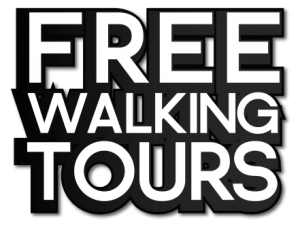“First things first: Happy New Year to you all!”
January is an ideal time to explore Budapest. The city transforms into a winter wonderland, with snow-dusted streets, the scent of chimney cakes wafting from street vendors, and the charm of a place steeped in history. With its thermal baths, rich cultural experiences, and stunning landmarks, Budapest has something for everyone.
Whether you’re seeking relaxation or adventure, here are our favorite Budapest winter activities 2025:
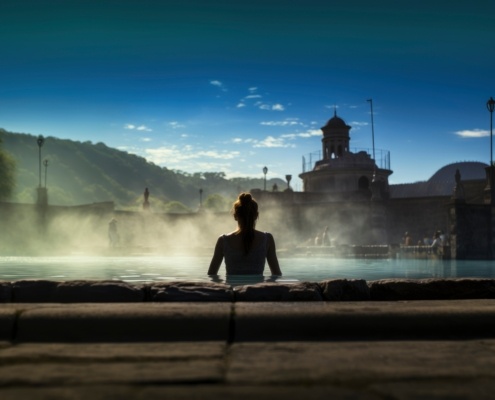
Soak in the Széchenyi Thermal Baths
After a day of exploring, there’s nothing better than unwinding in one of Budapest’s world-famous thermal baths. Budapest is known for its healing waters, and the baths offer a perfect way to relax and rejuvenate during the winter months. Széchenyi Thermal Bath is one of Europe’s largest and most iconic spas, offering both indoor and outdoor pools in a stunning neo-Baroque setting. It’s perfect for those who want a lively, yet soothing experience with a range of temperatures and wellness treatments.
If you’re looking for a quieter experience, Lukács Thermal Bath offers a more peaceful atmosphere, ideal for those who enjoy wellness and relaxation away from the crowds. For history and beautiful architecture, the Gellért Thermal Bath combines Art Nouveau elegance with medicinal waters in an upscale setting. And for a unique blend of Turkish heritage and modern amenities, Rudas Thermal Bath offers a rooftop pool with panoramic views of the Danube River, perfect for those seeking serenity and a bit of adventure.
These historic thermal baths provide not only relaxation but also a chance to soak in Budapest’s rich cultural heritage. Whether you’re seeking a lively spa day or a peaceful retreat, Budapest’s thermal baths are a must-visit for rejuvenation during your trip.
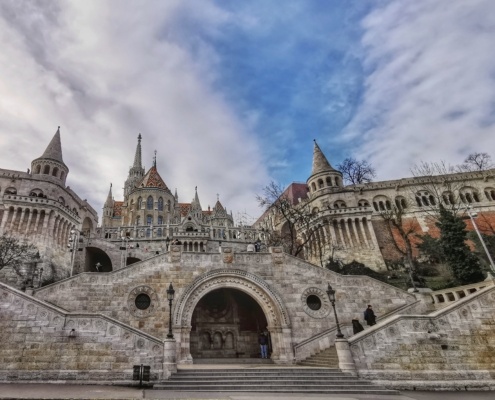
Visit the Historic Buda Castle District in a Sunny Afternoon
For history lovers, the Buda Castle District is an absolute must. It offers stunning views of the city and a glimpse into Hungary’s royal past. The Castle District’s impressive architecture is complemented by fascinating historical landmarks such as Fisherman’s Bastion and Matthias Church, each offering a unique perspective on Budapest’s rich history. It is worth to pick a sunny afternoon to enjoy the city’s landscape to the fullest, also it offers great viewpoints for the sunset!
To truly appreciate the castle’s significance, consider joining our daily Free Buda Castle guided tour or engaging in one of the historical storytelling sessions available. These sessions help bring the area’s past to life, adding depth and context to the experience. Be sure to visit the National Gallery or Rock Hospital and Military Bunker Museum, located in the Castle hill for a deeper dive into the city’s history.
You can reach the top of the castle hill by taking the Castle bus 16, enjoying a scenic walk uphill, or riding the funicular (round-trip tickets cost 5,000 HUF). After exploring the district, enjoy a break at Ruszwurm Café, a historic pastry shop offering delectable cakes and a cozy, old-world atmosphere.
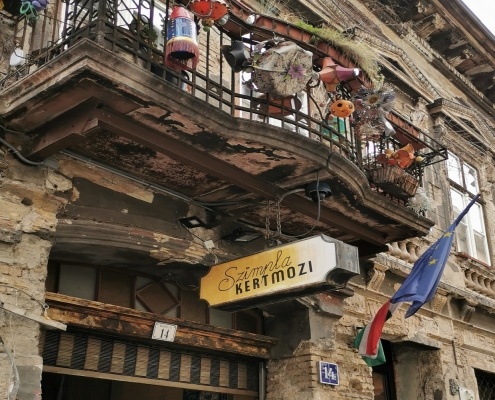
Explore the Cozy Cafés, Restaurants and Bars of the Jewish District
The Jewish District of Budapest is one of the most vibrant and culturally rich areas of the city. Start your visit at the magnificent Dohány Street Synagogue, the largest in Europe, with its stunning Moorish Revival architecture and peaceful gardens. Nearby, the Jewish Museum offers a deep dive into the history and culture of Hungarian Jews, with moving exhibits about religion, culture, and the Holocaust.
As you wander through the district, be sure to visit Gozsdu Udvar, a lively courtyard that houses a variety of cafes, restaurants, and trendy bars. This bustling spot is perfect for enjoying local Hungarian dishes or international cuisine, making it a great place to relax and people-watch.
The district is also home to striking street art murals that highlight its rich Jewish heritage and the broader history of Budapest. These murals add an artistic layer to the area’s already vibrant cultural scene. For those seeking a unique nightlife experience, the ruin bars like Szimpla Kert offer eclectic interiors filled with mismatched furniture, vintage finds, and contemporary pop art. In Szimpla you can visit a flea market every Saturday and a farmers market every Sunday. These quirky venues are perfect for a laid-back afternoon or evening.
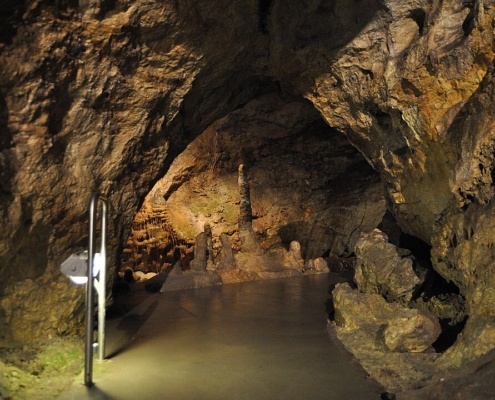
Discover the Pálvölgyi Cave: A Unique Underground Adventure
If you’re looking for something off the beaten path, consider visiting the Pálvölgyi Cave, one of Budapest’s hidden gems. Located in the Buda Hills, this cave system is the longest in Hungary, stretching over 32 km, with a 500-meter section open for guided tours. These tours, lasting around an hour, will take you through stunning stalactites and stalagmites, offering a fascinating underground adventure.
The cave maintains a constant temperature of 11°C, making it a cool escape from Budapest’s winter chill. The tour includes over 400 steps and a 7-meter-high ladder (known as a chicken ladder), adding an element of physical challenge. While the cave requires a good level of fitness, it offers a unique and educational experience about Hungary’s geological history.
Tickets for the guided tour are 3,500 HUF per person, and tours run every hour, starting at 15 minutes past the hour. After the tour, take a moment to relax at a nearby café in the Buda Hills for a warm drink before continuing your Budapest adventure.
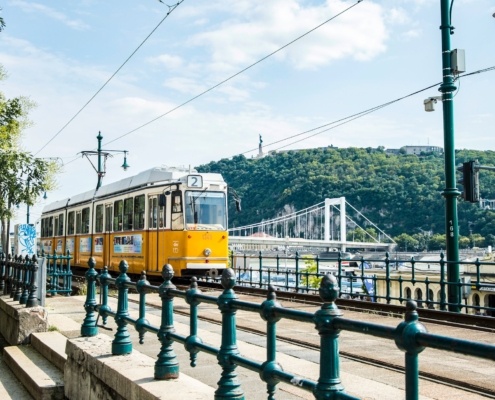
Take a Winter Stroll along the Danube
The Danube Promenade offers one of the most scenic walks in Budapest, and January is the perfect time to experience it. Though the weather may be chilly, the winter atmosphere along the river is magical. As you stroll, you’ll enjoy stunning views of iconic landmarks like the Hungarian Parliament, Buda Castle, and the Chain Bridge, all beautifully illuminated in the evening.
If you prefer a more relaxed pace or want to warm up, you can hop on a winter Danube river cruise. Most of the piers are located between the Elisabeth Bridge and the Chain Bridge on the Pest side, offering easy access to cruises that allow you to enjoy the city’s stunning architecture from the comfort of a heated boat.
For those who need a break from the cold, public transport is a convenient option. Trams 2, 19, or 41 run along the river, providing an efficient way to warm up while continuing to enjoy views of the city. If you’re traveling with others, consider purchasing a group travel ticket for 5,000 HUF, valid for 24 hours, allowing up to 5 people to travel together. It’s an ideal option for families or friends looking to explore more of Budapest comfortably.
Of course, our Budapest Winter Activities 2025 guide wouldn’t be complete without recommending to join our daily Free Walking Tours!
At TripToBudapest.hu, we offer free walking tours daily, inviting all travelers to join us in discovering the city’s rich history, vibrant culture, and hidden gems. Whether you’re a first-time visitor or a seasoned traveler, our friendly guides provide insightful and engaging tours that reveal the true essence of Budapest.

